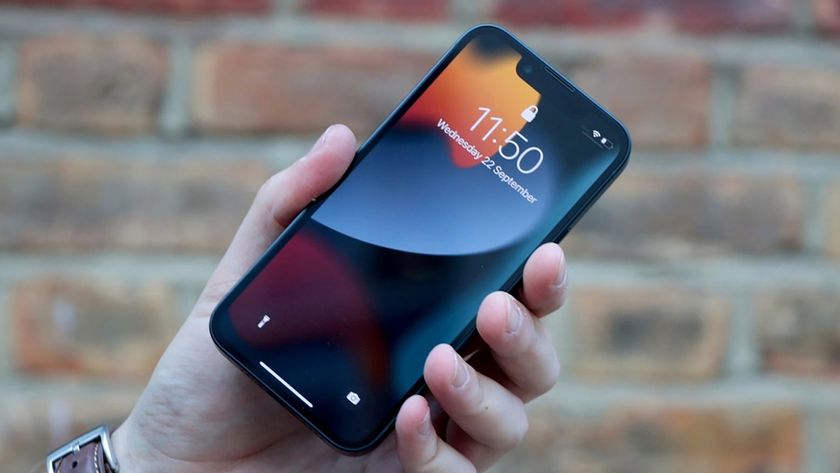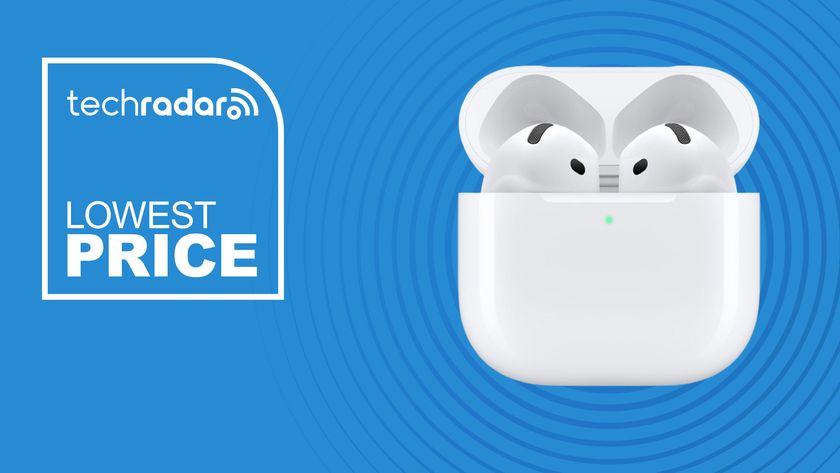This could be Apple's vision of the iPhone 10
There are some innovations that Apple isn't sharing yet
Magnetically attached add-on cameras
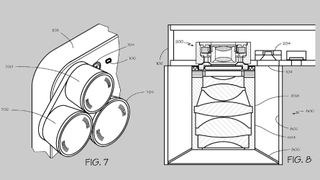
Add-on lenses are a must-have for many smartphoneographers, with systems such as Olloclip, Moment and iPro offering fisheye, telephoto, macro and more.
However, attaching a lens to your handset can be an unwieldy affair requiring a special case or clip to keep the lens snuggly aligned with the device's own camera lens.
Step forward, Apple, who in early 2014 was awarded the patent for a magnetic lens attachment system for its iDevices. Securing add-on lenses without the need for a case or clip is one of many tricks up this patent's sleeve, as the filed document also describes a VCM (voice coil motor) within the handset that might magnetically control the optics in the detachable lens – think optical image stabilisation, zoom or autofocus.
While a magnetically attached camera lens has its attractions, Apple is also covering its bases with physical attachments. As AppleInsider points out, mere weeks after this magnetic attachment patent was granted, another surfaced for a physical bayonet attachment mechanism.
Despite the presence of a burgeoning add-on market, none of the main smartphone players have introduced a swappable lens system, unless you count Sony's QX series. But with more people ditching their dedicated camera in favour of the smartphone's snapper, surely it's only a matter of time before they do.
Curved and flexible touch displays
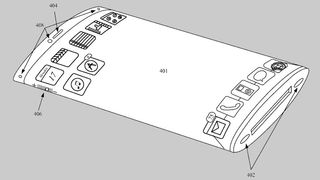
Oh, technology, how fickle you are. Was it really only 10 years ago that flat panels were the future and any display with the merest hint of a curve was damned as a relic from a prehistoric age?
Well, that's the past, and curves are back in force, with screens everywhere now eager to shed their straight lines in favour of sweeping ones.
Get daily insight, inspiration and deals in your inbox
Sign up for breaking news, reviews, opinion, top tech deals, and more.
How convenient then that 2014 saw a patent granted to Apple for an "electronic device with wrap around display". Among the filing's legalese are plans to "maximise the utility of unused portions of these devices" or, in other words, to bag some actual use from the largely lifeless rear and sides of our devices.
Essentially this would provide a curved display wrapped around an entire handset. The patent goes on to suggest that only the portion of screen within the user's field of view would be illuminated, presumably to save battery life. Worried about how touchscreen technology works with a curved screen? Don't be: Apple has a "curved touch sensor" patent for that, too.
While today's iDevices still sport all-flat screens, curved and flexible smartphone displays have recently come to pass.
Beginning in 2013 with the Samsung Galaxy Round and the LG G Flex, by 2014 the genuinely interesting Samsung Galaxy Edge had extended its display to the spine of the handset (the patent for which went public almost a year before its eventual release) and the rarely unique Yotaphone 2 went fully dual-screened with an E Ink rear.
Will 2015 see a dual-screen iPhone? Given Apple's metronomic tick-tock release cycle it seems unlikely, but this patent combined with the backside touch controls we, er, touched on earlier do suggest there's plenty of room for innovation at the rear of our devices.
iStylus
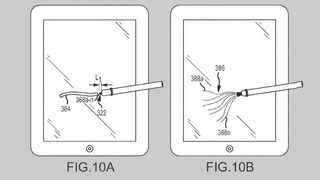
"Who wants a stylus?" famously quipped Steve Jobs in 2007 as he unveiled his digit-driven iPhone to the world. Of course, Jobs' cheap jibe was pre-iPad and little more than a shot at previous smartphone generations and their clunky, resistive touchscreens.
Since then we've witnessed the rise of the tablet, seen smartphone sizes grow and, alongside them, a healthy ecosystem of third-party styluses.
Times change and, along with one or two other high-profile about-turns, recent patent filings suggest at least some Apple engineers could be preparing the ground for an iStylus.
The secret sauces in these stylus filings include detection of orientation and angle while writing, and an extendable nib that would allow the stylus to perform when retracted. This could be used like a stiff pencil for precise writing or as a longer multi-touch paintbrush for artistic types to doodle (possibly featuring multiple so-called "strands").
If Apple does choose to enter the stylus game, it faces some stiff competition.
Samsung's S Pen, the smart stylus bundled with the Galaxy Note phablets and tablets, raised eyebrows when it surfaced inside the original Galaxy Note at IFA in 2011. Despite many a pundit's initial scepticism, the Note line and its stylus have flourished, including a bold collaboration with writing royalty Montblanc in 2014.
Featuring a thumb button and a dizzying degree of pressure sensitivity, we called its latest iteration "certainly the best handwriting experience on a smartphone" in our review of the Samsung Galaxy Note 4.
Could it appear on an iPhone? It could certainly work as an official accessory – although it would seem more suited to the iPad's larger screen.
Now read Tech transformers: 10 big innovations making our gadgets better

